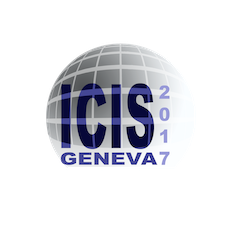Speaker
Description
The Neutralized Drift Compression eXperiment (NDCX-II) at Lawrence Berkeley National Laboratory is an induction accelerator designed to deliver intense nano-second pulses of ions, up to several tens of nC/pulse, with kinetic energy up to 1.2 MeV [1]. A filament-driven multicusp plasma ion source [2] is used to generate pulsed helium ion beams. Both filament and arc power supplies are pulsed to produce a plasma discharge for 300 µs. Applying a 1 µs long voltage pulse of 150 kV to the injector during that period leads to the extraction of pulsed helium ion beams above 100 mA. The ~12 m long induction linac is capable of accelerating and rapidly compressing beam pulses by adjusting the slope and amplitude of the 12 compression and acceleration voltage waveforms in each acceleration gap. Peak voltages range from 15 kV to 200 kV with durations of 0.07 - 1 µs. At the exit of the last acceleration gap the bunch duration is 30-40 ns with a head-to-tail velocity ramp that further compresses the beam to a pulse length of 2 ns FWHM. The final spot size has a diameter of 2 mm FWHM.
These unique beam properties enable the study of dynamics of radiation effects in materials, including studies of the fluence and dose rate dependence of the energy loss in materials. The applied velocity tilt that longitudinally compresses the beam causes a certain time dependent energy profile of the beam and complicates a precise energy determination. Due to this, conventional beam diagnostics, like time-of-flight measurements, are imprecise since the inferred energy distribution is ambiguous. This results in greater uncertainty for the energy distribution of the beam. Recent energy-loss measurements using time-of-flight diagnostics at NDCX-II show a discrepancy between measured and simulated energies of about 50 keV. The beam behavior is simulated using the Particle-in-Cell code Warp [3] and various properties of the beam can be predicted at any stage in the accelerator. So far the predictions of the arrival time of the beam from Warp are in fair agreement with experiments, which leads to the question of how good Warp is at predicting the energy distribution of the beam. To accurately measure the energy distribution of the beam it is necessary to have a time independent energy measurement. A tool to perform such a measurement is a Thomson parabola. Based on the deflection of charged particles by electric and magnetic fields, this device differentiates energy as well as charge-to-mass ratio. With a microchannel plate detector or a scintillator it is possible to visualize this differentiation, which results in parabolic particle distributions on the position sensitive detector. A Thomson parabola has been designed for the special application of measuring the energy spectra of NDCX-II beams with an energy resolution of about 10 keV. Direct measurements of energy distributions using the Thomson parabola spectrometer and comparison with Warp simulations will be presented.
Acknowledgement
This work was performed under the auspices of the U. S. Department of Energy under contracts DE-AC02-05CH11231 (LBNL) and DE-AC52-07NA27344 (LLNL).
References
[1] P.A. Seidl et. al., "Short intense ion pulses for materials and warm dense matter research", Nucl. Instr. Meth. A 800 pp. 98-103 (2015).
[2] Q. Ji, et. al., "Development and testing of a pulsed helium ion source for probing materials and warm dense matter studies", Rev. Sci. Instr. 87, 02B707 (2016).
[3] http://warp.lbl.gov
